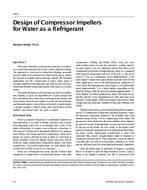Building envelopes are subjected to highly variable climatic loadings on the exterior and relatively stable conditions in theinterior. These loadings result in transportation of heat, air, and moisture across the building envelope, and, therefore, its componentsmay experience variances in wetting or drying depending on the building design and construction, material use, exteriorclimate and interior conditions. The durability of these components will be compromised if there is excessive moisture accumulationfor extended periods. Wind-driven rain (WDR) is a major moisture load that affects the durability of building envelopecomponents. To control and manage rain load, building designers incorporate overhangs in their roof design and introduce anair cavity between cladding and sheathing membrane with the objective of creating a capillary break. To properly design for WDRload, however, one has to have information on the relative magnitude and frequency of the wind-driven load on facades. In thispaper, the WDR measurements that the authors carried out for four years and nine months at a two-story level test building ina mild coastal climate are presented. The measured WDR exposures on different orientations of the building’s facades arecompared and the rain admittance factors (RAFs) for different locations on the building are calculated using datasets with lowand high rainfall intensities and are compared.
Citation: Thermal Performance of Exterior Envelopes of Whole Buildings XIII, Conference Papers
Product Details
- Published:
- 2016
- Number of Pages:
- 8
- Units of Measure:
- Dual
- File Size:
- 1 file , 3.2 MB
- Product Code(s):
- D-BldgConf16-39


